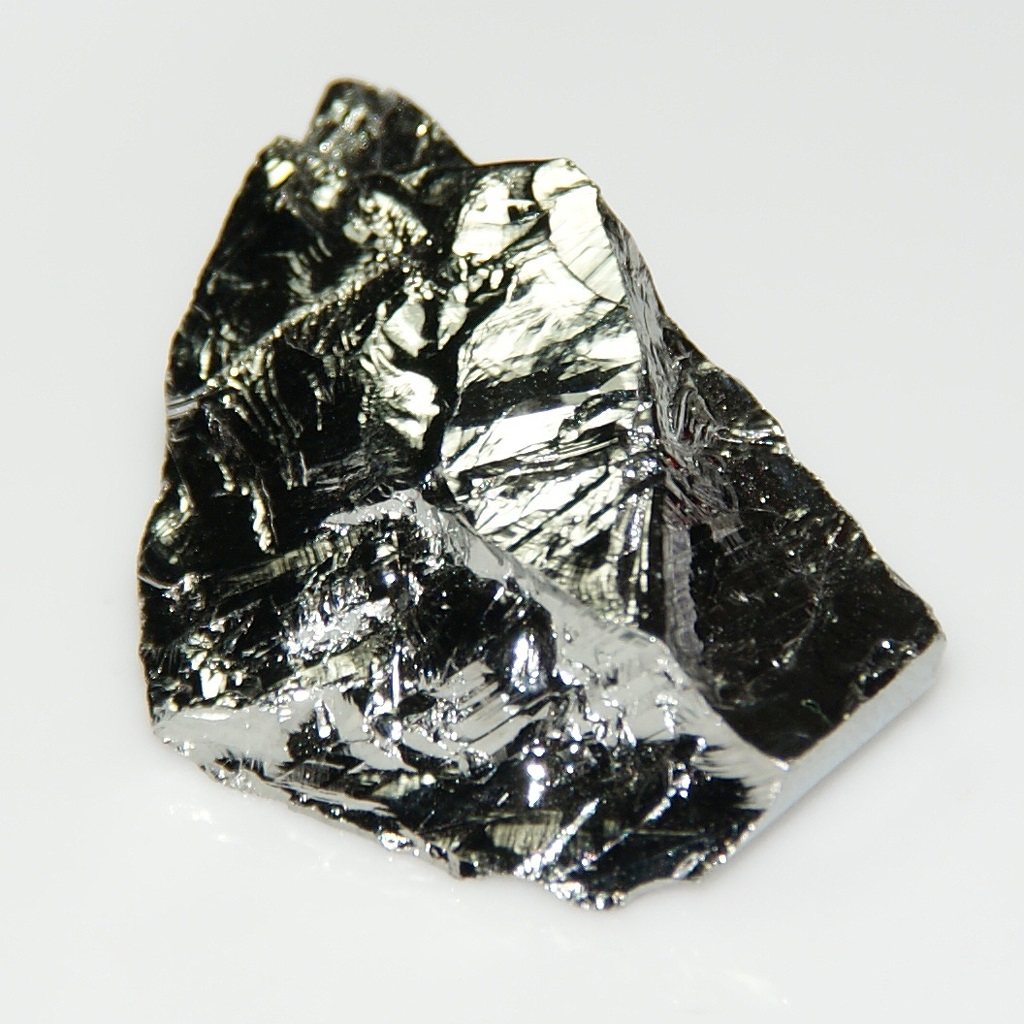Germani
32
Ge
Grup
14
Període
4
Bloc
p
Protons
Electrons
Neutrons
32
32
41
Propietats Generals
Nombre atòmic
32
Massa atòmica
72,63
Nombre de massa
73
Categoria
Metal·loide
Color
Gris
Radioactiu
No
From the Latin word Germania, Germany
Estructura cristal·lina
Cara cúbica centrada
Història
In 1869, Dmitri Mendeleev predicted its existence and some of its properties based on its position on his periodic table and called the element eka-silicon.
In 1886, Clemens Winkler found the new element along with silver and sulfur, in a rare mineral called argyrodite.
The first silicon-germanium alloys were obtained in 1955.
In 1886, Clemens Winkler found the new element along with silver and sulfur, in a rare mineral called argyrodite.
The first silicon-germanium alloys were obtained in 1955.
Electrons per capa
2, 8, 18, 4
Configuració electrònica
[Ar] 3d10 4s2 4p2
Germanium and the oxide are transparent to infrared radiation
Propietats Físiques
Fase
Sòlid
Densitat
5,323 g/cm3
Punt de fusió
1211,4 K | 938,25 °C | 1720,85 °F
Punt d'ebullició
3106,15 K | 2833 °C | 5131,4 °F
Entalpia de fusió
31,8 kJ/mol
Entalpia de vaporització
334 kJ/mol
Capacitat tèrmica específica
0,32 J/g·K
Abundància a l'escorça terrestre
0,00014%
Abundància a l'univers
0,00002%

Número CAS
7440-56-4
Número CID de PubChem
6326954
Propietats Atòmiques
Radi atòmic
122 pm
Radi covalent
122 pm
Electronegativitat
2,01 (Escala de Pauling)
Potencial d'ionització
7,8994 eV
Volum atòmic
13,6 cm3/mol
Conductivitat tèrmica
0,599 W/cm·K
Estats d'oxidació
-4, 1, 2, 3, 4
Aplicacions
The most common use of germanium is as a semiconductor in electronics.
Germanium is used in transistors and in integrated circuits.
It is used as an alloying agent and as a catalyst.
It is also used in infrared spectroscopes and infrared detectors.
Germanium is used in transistors and in integrated circuits.
It is used as an alloying agent and as a catalyst.
It is also used in infrared spectroscopes and infrared detectors.
Germanium is not known to be toxic
Isòtops
Isòtops estables
70Ge, 72Ge, 73Ge, 74GeIsòtops inestables
58Ge, 59Ge, 60Ge, 61Ge, 62Ge, 63Ge, 64Ge, 65Ge, 66Ge, 67Ge, 68Ge, 69Ge, 71Ge, 75Ge, 76Ge, 77Ge, 78Ge, 79Ge, 80Ge, 81Ge, 82Ge, 83Ge, 84Ge, 85Ge, 86Ge, 87Ge, 88Ge, 89Ge